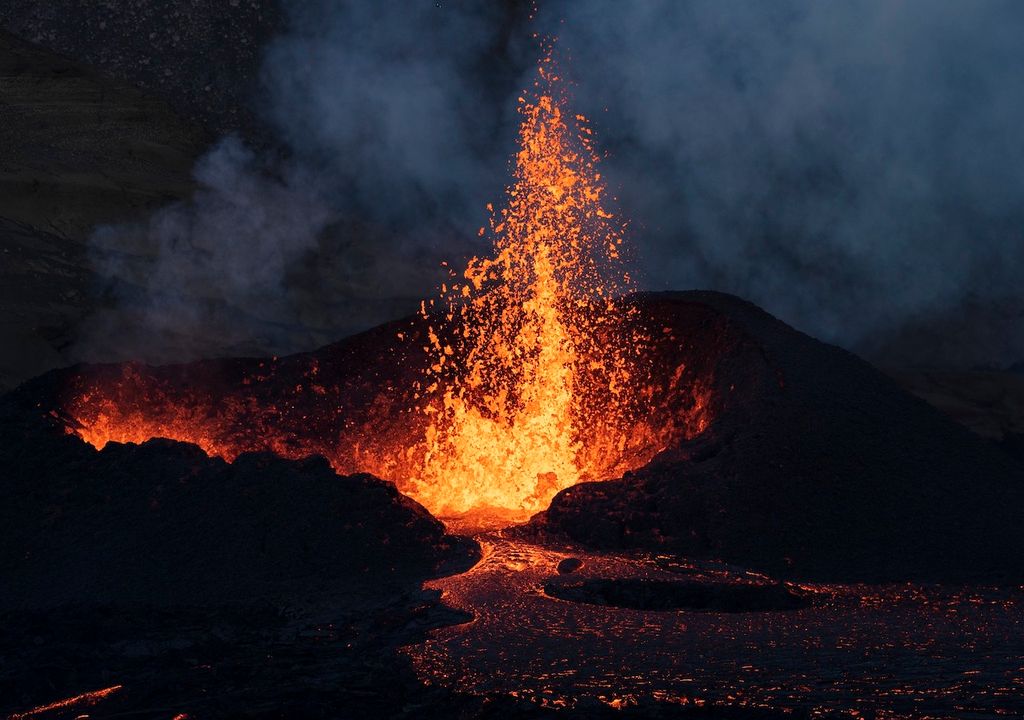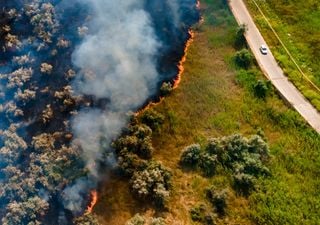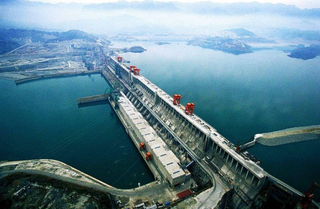Heavy Volcanic Eruption in Iceland Threatens the Town of Grindavik with Lava Fissure
A volcanic eruption is declared in Iceland, which appeared particularly heavy and threatening for the town of Grindavik. Find out the latest update.

After an extensive period of earthquake activity, Iceland’s volcano has erupted with voluminous lava flows and a fissure length extending 4 kilometres (km). The eruption is located about 4 km east of Grindavik, between Sýlingarfell and Hagafell, having occurred 22:17 GMT last night.
An eruption has begun near the evacuated town of Grindavík. Our priorities remain to protect lives and infrastructure. Civil Defence has closed off the affected area. We now wait to see what the forces of nature have in store. We are prepared and remain vigilant.
— President of Iceland (@PresidentISL) December 19, 2023
@Vedurstofan pic.twitter.com/yKx4WKU61c
Luckily, the lava seems to be heading to the north, where most of it should flow, but the south part, there seemed the possibility it will head to the town of Grindavik. The distance from its south end to the town is just under 3 km. If the lava barriers hold, the lava will head to the north where it cannot harm anyone.
Significant in Icelandic volcanic records
This is described as the largest eruption in the Reykjanes peninsula for several years, and among the strongest in Icelandic’s recent volcanic history. While Grindavik is threatened by the eruption’s lava flows, only time will tell if the barriers hold them off.

These flows have been called “hard to deal with” by a YouTuber on the Just Iceland channel who posted a video shared above, who adds “this could easily become a major disaster.”
But there is some reassuring news. The Coast Guard helicopter helped to confirm that the lava is not heading straight to the town, currently. Thankfully also, around 4000 people from the town were evacuated since 10 November, so there should not be any local residents there.
For some scale... the fountains of lava erupting from the 4km fissure in Reykjanes #Iceland are height of the North Downs seen from #Reigate >100m with runny lava rapidly flowing and filling rapidly into valleys. (rough pic!) pic.twitter.com/WnUuSvu2he
Simon Collins (@SirGeogy) December 19, 2023
According to a recent online update: “The police commissioner in Suðurnes says that no one should be in any physical danger. The most significant risk from the eruption, as it stands, is if changes occur in the fissure.” But a state of Emergency state has been declared near the Mount Fagradalsfjall volcano, by Civil Defence in Iceland.
Monitoring the eruption for updates
Scientists are closely monitoring the situation. Currently, the lava seems to be well positioned and is not heading towards the town. Whether or not the fissure will continue to grow is uncertain, but volcanologist Ármann Höskuldsson said the eruption is in the ideal location in an intricate sequence of fissures, suggesting that the fissure might stop extending. This would be good news, in addition to the statement that wind directions have been favourable according to meteorologist Einar Sveinbjörnsson.
Probably the best screenshot I got from the beginning of last night's #eruption at Sundhnúkagígar in #Iceland courtesy of the wonderful webcams from @livefromiceland pic.twitter.com/N5LN9lZMmb
— Sophie Carr (@SophieCarrPhoto) December 19, 2023
The crack and fissures do pose a danger to the surrounding area, which is closed off to the public. While the length of the crack is several kilometres, it flows at a dangerous rate of around 100 to 200 cubic metres per second, according to the Icelandic Met Office.
Updated map of fissure in #Iceland. This morning reports that lava is not heading towards Grindavík or the power plant, so good scenario at this point. The power of the fissure has died down a bit as expected (the first few hours always seem to be the most effusive). #eruption pic.twitter.com/tAB1mxvx9o
— Sophie Carr (@SophieCarrPhoto) December 19, 2023
Their latest post states that the intensity of the volcano is decreasing. But this does not mean that the eruption will stop soon, but that it is reaching a point of equilibrium (or balance). It is good news that the fissure is dying down for the town of Grindavik, and that flows do not appear to be going in that direction. However, constant monitoring will need to be made in case of any changes.








